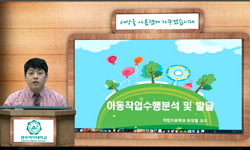This study examined the relationship between various latent profiles of home environment stimulus, internalization and externalization problems, and influencing factors of elementary school children. As a result of applying latent profile analysis, th...
http://chineseinput.net/에서 pinyin(병음)방식으로 중국어를 변환할 수 있습니다.
변환된 중국어를 복사하여 사용하시면 됩니다.
- 中文 을 입력하시려면 zhongwen을 입력하시고 space를누르시면됩니다.
- 北京 을 입력하시려면 beijing을 입력하시고 space를 누르시면 됩니다.

초등학교 아동의 가정환경자극 잠재프로파일 유형과 내재화 및 외현화 문제 및 영향 변인 간 관계 = The Relationship between the Latent Profiles of the Home Environment Stimulus, Internalization and Externalization Problems, and Influencing Factors of Elementary School Children
한글로보기https://www.riss.kr/link?id=A108416830
-
저자
하문선 (공주교육대학교)

- 발행기관
- 학술지명
- 권호사항
-
발행연도
2022
-
작성언어
Korean
-
주제어
Elementary school ; children ; home environment stimulus ; latent profile ; influence factor ; 초등학교 ; 아동 ; 가정환경자극 ; 잠재프로파일 ; 영향 변인
-
등재정보
KCI등재
-
자료형태
학술저널
-
수록면
153-173(21쪽)
- 제공처
- 소장기관
-
0
상세조회 -
0
다운로드
부가정보
다국어 초록 (Multilingual Abstract)
This study examined the relationship between various latent profiles of home environment stimulus, internalization and externalization problems, and influencing factors of elementary school children.
As a result of applying latent profile analysis, the final four latent profiles were found to be most suitable: stimulus excellent group (66.4%) with the highest level of all home environment stimuli; stimulus moderate-family cohesion-deficient group (23.2%) with the moderate level of home environment stimulus and low family cohesion; stimulus moderate-physical support-deficient group (6.7%) with the moderate level of home environment stimuli and low physical support; and lowest stimulus-emotional support-deficit group (3.6%) with the lowest home environment stimulus and emotional support. Also, as a result of examining the existing differences in internalization and externalization problems based on the latent profile, significant differences were found in emotional symptoms, hyperactivity, and inattention levels. Finally, as a result of verifying the variables that affect the classification of the latent profile, gender did not have a significant effect, but communication ability, household income, and mother's marital satisfaction had a significant effect. Notably, the higher the communication ability, the higher the household income, and the higher the marital satisfaction, the higher the likelihood of belonging to the stimulus excellent group. This study has empirical implications in the sense that it identified the existence of various sub-latent profiles based on home environment stimulus of elementary school children and confirmed the differences in the level of adaptation for each profile. Furthermore, this study investigated the effect of individual and environmental variables on profile classification in a more three-dimensional and integrated way.
Implications and suggestions were presented based on the study’s results.
국문 초록 (Abstract)
본 연구는 초등학교 아동의 가정환경자극에 대한 다양한 잠재프로파일과 내재화 및 외현화 문제 및영향 변인 간 관계를 살펴보기 위해 수행되었다. 잠재프로파일 분석을 적용결과, 잠재프...
본 연구는 초등학교 아동의 가정환경자극에 대한 다양한 잠재프로파일과 내재화 및 외현화 문제 및영향 변인 간 관계를 살펴보기 위해 수행되었다. 잠재프로파일 분석을 적용결과, 잠재프로파일은 최종4개가 가장 적합한 것으로 나타났다. 구체적으로 가정환경자극 수준의 모든 요인이 가장 높은 자극우수집단(66.4%), 가정환경자극 수준이 보통이며 가족통합이 낮은 자극중-가족통합부족집단(23.2%), 가정환경자극 수준이 보통이며 물리적 영역이 낮은 자극중-물리적지원결핍집단(6.7%), 가정환경자극수준이 가장 낮고 정서적 지지가 낮은 자극하-정서적지지결핍집단(3.6%)이 나타났다. 또한 잠재프로파일에 따라 내재화 및 외현화 문제에 차이가 나타나는지 살펴본 결과, 정서증상과 과잉행동 및 부주의 수준에서 유의미한 차이가 나타났다. 마지막으로, 잠재프로파일 분류에 영향을 미치는 변인을 검증한 결과 성별은 유의한 영향을 미치지 않았고 의사소통능력, 가구소득, 모의 결혼만족도는 유의한 영향을 미치는 것으로 나타나 의사소통능력이 높을수록, 가구소득이 높을수록, 모의 결혼만족도가 높을수록 자극우수 집단에 속할 가능성이 높았다. 본 연구는 초등학교 아동의 가정환경자극에 따른 다양한 이질적인 하위 잠재프로파일이 존재함을 파악하고 각 유형별 적응 수준의 차이를 확인하였으며, 잠재집단 분류에 있어서 개인 특성 및 환경적 특성이 어떠한 영향을 미치는지 보다 통합적으로 살펴보았다는 점에서 실증적 함의점이 있다. 마지막으로 본 연구의 의의와 제한점이 논의되었다.
1 하문선, "학령초기 아동의 강점․난점에 대한 잠재집단 유형과 학교적응 및 영향변인 간 관계" 초등교육연구원 32 (32): 183-202, 2021
2 연은모 ; 최효식, "초등학생이 지각한 학교환경, 자아존중감, 행복감 간 관계: 집행기능곤란, 성별의 조절효과" 학습자중심교과교육학회 19 (19): 121-140, 2019
3 성미영 ; 장영은 ; 서병태, "초등학교 3학년 아동의 학교적응 유형을 예측하는 학습습관과 정서행동문제의 역할" 한국보육지원학회 12 (12): 79-102, 2016
4 이예진 ; 전은옥, "초등학교 1학년 아동의 학교적응에 영향을 미치는 변인 탐색: 어머니의 취업, 가정환경, 아동의 집행기능 곤란을 중심으로" 육아정책연구소 13 (13): 101-121, 2019
5 한명숙, "유아의 배려행동에 영향을 미치는 가정환경 관련 변인들의 구조적 관계 : 가족건강성, 모자상호작용, 가정환경자극을 중심으로" 중앙대학교 대학원 2013
6 김선희, "유아의 또래놀이행동에 대한 사회경제적 지위, 가정환경자극 및 유아의 언어능력간의 구조적 관계" 교육과학연구소 45 (45): 93-114, 2014
7 김세리 ; 이강이, "유아의 또래놀이 상호작용에 영향을 미치는 사회경제적 지위, 가정환경자극 및 유아의 행동문제 간의 구조적 관계" 한국보육지원학회 12 (12): 41-58, 2016
8 배한진 ; 허청아, "유아기의 가정환경 잠재프로파일 유형에 따른 초등학교 1학년 학교적응의 차이" 육아정책연구소 13 (13): 75-99, 2019
9 장영은, "유아기 발달에 대한 생애 초기 가족 누적위험요인의 영향 - 가정학습환경을 매개로 -" 한국아동복지학회 (54) : 79-111, 2016
10 김선희, "유아기 가정환경자극의 변화 유형과 예측요인: 성장혼합모형" 한국영유아교원교육학회 25 (25): 139-167, 2021
1 하문선, "학령초기 아동의 강점․난점에 대한 잠재집단 유형과 학교적응 및 영향변인 간 관계" 초등교육연구원 32 (32): 183-202, 2021
2 연은모 ; 최효식, "초등학생이 지각한 학교환경, 자아존중감, 행복감 간 관계: 집행기능곤란, 성별의 조절효과" 학습자중심교과교육학회 19 (19): 121-140, 2019
3 성미영 ; 장영은 ; 서병태, "초등학교 3학년 아동의 학교적응 유형을 예측하는 학습습관과 정서행동문제의 역할" 한국보육지원학회 12 (12): 79-102, 2016
4 이예진 ; 전은옥, "초등학교 1학년 아동의 학교적응에 영향을 미치는 변인 탐색: 어머니의 취업, 가정환경, 아동의 집행기능 곤란을 중심으로" 육아정책연구소 13 (13): 101-121, 2019
5 한명숙, "유아의 배려행동에 영향을 미치는 가정환경 관련 변인들의 구조적 관계 : 가족건강성, 모자상호작용, 가정환경자극을 중심으로" 중앙대학교 대학원 2013
6 김선희, "유아의 또래놀이행동에 대한 사회경제적 지위, 가정환경자극 및 유아의 언어능력간의 구조적 관계" 교육과학연구소 45 (45): 93-114, 2014
7 김세리 ; 이강이, "유아의 또래놀이 상호작용에 영향을 미치는 사회경제적 지위, 가정환경자극 및 유아의 행동문제 간의 구조적 관계" 한국보육지원학회 12 (12): 41-58, 2016
8 배한진 ; 허청아, "유아기의 가정환경 잠재프로파일 유형에 따른 초등학교 1학년 학교적응의 차이" 육아정책연구소 13 (13): 75-99, 2019
9 장영은, "유아기 발달에 대한 생애 초기 가족 누적위험요인의 영향 - 가정학습환경을 매개로 -" 한국아동복지학회 (54) : 79-111, 2016
10 김선희, "유아기 가정환경자극의 변화 유형과 예측요인: 성장혼합모형" 한국영유아교원교육학회 25 (25): 139-167, 2021
11 이영 ; 이정림 ; 박신진 ; 우현경 ; 구자연 ; 정현주, "영아기 가정환경검사(IT-HOME) 규준 개발 연구" 대한가정학회 53 (53): 433-445, 2015
12 이고운, "어울림프로그램이 초등학생의 자아존중감과 학교생활태도에 미치는 효과" 광주교육대학교 교육대학원 2016
13 장영은, "어머니의 우울이 초등학교 3학년 아동의 집행기능곤란에 미치는 영향: 가정환경의 매개효과" 학습자중심교과교육학회 20 (20): 507-528, 2020
14 서소정 ; 김연주 ; 하지영, "어머니-유아 조화적합성과 유아의 자아존중감 간의 관계: 가정환경자극의 조절효과를 중심으로" 한국보육학회 18 (18): 159-173, 2018
15 이지연 ; 곽금주, "아동초기 사회경제적 지위(SES)와 가정환경이 언어발달에 미치는 영향" 한국심리학회 산하 한국발달심리학회 21 (21): 151-165, 2008
16 하문선, "맞벌이가정 아버지의 일-가족 갈등과일-가족 향상, 양육스트레스와 자녀와의 상호작용 및 아동의 문제행동의 관계" 학습자중심교과교육학회 18 (18): 529-552, 2018
17 장혜진 ; 윤혜미, "농촌아동의 가정환경자극과 학교적응관계에서 성취동기의 매개효과" 한국아동복지학회 (33) : 7-36, 2010
18 최정아 ; 이승연, "결혼이민자 가정의 가정환경과 유아의 사회적 능력간의 관계" 교육과학연구소 39 (39): 19-43, 2008
19 김혜경, "가족형태에 따른 가정환경(Home)과 유아의 사회, 정서적 발달" 7 (7): 3-16, 2002
20 이은해, "가정환경자극검사(HOME)의 타당화 연구" 2 : 49-63, 1982
21 노보람 ; 최나야, "가정환경 자극과 부모의 온정적 양육이 5세 유아의 언어 및 인지발달에 미치는 영향: 일반가정과 저소득가정의 차이" 학습자중심교과교육학회 18 (18): 661-686, 2018
22 장영애, "가정환경 자극검사(HOME)와 학령전 아동의 발달 수준과의 관계" 4 : 1-10, 1983
23 한명숙 ; 서성숙, "가정의 사회경제적 배경과 가정환경자극 및 유아의 상호작용적 또래놀이 간의 구조분석" 한국생태유아교육학회 12 (12): 27-47, 2013
24 박서현, "가정의 문해상호작용과 문해환경의 잠재유형에 따른 유아의 읽기 태도 차이" 한국교육학회 60 (60): 251-275, 2022
25 최나야 ; 노보람 ; 최지수 ; 오태성, "가정의 독서환경 군집에 따른 유아 어휘력과 읽기 흥미의 차이" 학습자중심교과교육학회 21 (21): 23-37, 2021
26 Phillips, B. M., "Variations in the home literacy environment of preschool children : A cluster analytic approach" 13 (13): 146-174, 2009
27 Brown, D. D., "Understanding Parent Reports of Children’s Attention Behaviors : Role of Children’s Attention Skills, Temperament, and Home Environment" 6 : 41-59, 2010
28 Bradley, R. H., "The relation of infants’ home environments to achievement test performance in first grade : A follow-up study" 1984 : 803-809, 1984
29 Bradley, R. H., "The relation of home environment, cognitive competence, and IQ among males and females" 1980 : 1140-1148, 1980
30 Davis-Kean, P. E., "The influence of parent education and family income on child achievement : the indirect role of parental expectations and the home environment" 19 (19): 294-304, 2005
31 Brooks-Gunn, J., "The effects of poverty on children" 55-71, 1997
32 Bronfenbrenner, U., "The ecology of human development: Experiments by nature and design" Harvard university press 1979
33 Belsky, J., "The determinants of parenting: A process model" 83-96, 1984
34 Haveman, R., "The determinants of children’s attainments : A review of methods and findings" 33 (33): 1829-1878, 1995
35 Klebanov, P. K., "The contribution of neighborhood and family income to developmental test scores over the first three years of life" 69 (69): 1420-1436, 1998
36 Goodman, R., "The Strengths and Difficulties Questionnaire : A research note" 38 (38): 581-586, 1997
37 Han, W. J., "The Home Observation for Measurement of the Environment(HOME)in middle childhood : A study of three large-scale data sets" 4 (4): 189-210, 2004
38 Lai, W. W., "The Home Observation Measure of the Environment is associated with symptoms of ADHD and oppositionality in a CAMHS sample" 23 (23): 503-513, 2018
39 Lo, Y., "Testing the number of components in a normal mixture" 88 (88): 767-778, 2001
40 Chess, S., "Temperament : Theory and practice" Routledge 2013
41 Kouros, C. D., "Spillover between marital quality and parent–child relationship quality : Parental depressive symptoms as moderators" 28 (28): 315-325, 2014
42 Kline, R. B., "Principles and practice of structural equation modeling" Guilford Publications 2015
43 Price, J. M., "Predictors of externalizing behavior problems in early elementary-aged children : The role of family and home environments" 174 (174): 464-471, 2013
44 Cooper, C. E., "Poverty, race, and parental involvement during the transition to elementary school" 31 (31): 859-883, 2010
45 Parker, J. G., "Peer relationships in child development" Wiley 95-131, 1989
46 Taraban, L., "Parenting in context : Revisiting Belsky’s classic process of parenting model in early childhood" 48 : 55-81, 2018
47 Berge, J. M., "Parenting characteristics in the home environment and adolescent overweight : A latent class analysis" 18 (18): 818-825, 2009
48 Duncker, K., "On problem solving" 58 (58): 1-113, 1945
49 Cohen, A., "Numerical Analysis of Wavelet Methods" Elsevier 2003
50 Leaper, C., "Moderators of gender effects on parents’ talk to their children : a meta-analysis" 34 (34): 3-27, 1998
51 McLachlan, G., "Mixtures of factor analyzers" 2000
52 Bornstein, M. H., "Maternal sensitivity and child responsiveness : Associations with social context, maternal characteristics, and child characteristics in a multivariate analysis" 12 (12): 189-223, 2007
53 Obradović, J., "Maternal scaffolding and home stimulation : Key mediators of early intervention effects on children’s cognitive development" 52 (52): 1409-1421, 2016
54 Baker, C. E., "Maternal psychological functioning and children’s school readiness : The mediating role of home environments for African American children" 28 (28): 509-519, 2013
55 Schoppe-Sullivan, S. J., "Marital conflict and children’s adjustment : Evaluation of the parenting process model" 69 (69): 1118-1134, 2007
56 Conger, R. D., "It takes two to replicate : A mediational model for the impact of parents’ stress on adolescent adjustment" 66 (66): 80-97, 1995
57 Coates, B., "Interrelations in the attachment behavior of human infants" 6 (6): 218-230, 1972
58 Isabella, R. A., "Interactional synchrony and the origins of infant-mother attachment : A replication study" 62 (62): 373-384, 1991
59 Erikson, E. H., "Identity: Youth and Crisis" Norton 1968
60 Bradley, R. H., "Home observation for measurement of the environment: a revision of the preschool scale" 1979
61 Caldwell, B. M., "Home observation for measurement of the environment: Administration manual" Family & Human Dynamics Research Institute, Arizona State University 2003
62 Muthén, B. O., "Handbook of quantitative methodology for the social science" Sage 345-368, 2004
63 Collins, W. A., "Handbook of parenting" Erlbaum 73-101, 2001
64 Achenbach, T. M., "Handbook of child psychopathology" Springer 65-93, 1983
65 Ladnier, R. D., "Handbook of attachment interventions" Academic Press 27-65, 2001
66 Dunn, J., "Family talk about feeling states and children’s later understanding of others’ emotions" 27 (27): 448-455, 1991
67 Linver, M. R., "Family processes as pathways from income to young children’s development" 38 (38): 719-734, 2002
68 Cox, M. J., "Families as systems" 48 (48): 243-267, 1997
69 Baharudin, R., "Factors related to the quality of the home environment and children’s achievement" 19 (19): 375-403, 1998
70 Akaike, H., "Factor analysis and AIC" 52 : 317-332, 1987
71 Schwartz, G., "Estimating the dimension of a model" 6 : 461-464, 1978
72 Conger, R. D., "Economic pressure in African American families : a replication and extension of the family stress model" 38 (38): 179-193, 2002
73 Tolan, P. H., "Disruptive behavior disorders" Springer 161-191, 2013
74 Menaghan, E. G., "Determining children’s home environments : The impact of maternal characteristics and current occupational and family conditions" 1991 : 417-431, 1991
75 Nylund, K. L., "Deciding on the number of classes in latent class analysis and growth mixture modeling : A Monte Carlo simulation study" 14 (14): 535-569, 2007
76 Gordon, I. J., "DETERMINING TEACHER-EFFECTIVENESS" 20 (20): 119-150, 1962
77 Murray, A. D., "Competence in language at 24 months : Relations with attachment security and home stimulation" 161 (161): 133-140, 2000
78 Beck, A., "Cognitive therapy and the emotional disorders" New American Library 1976
79 Meichenbaum, D., "Cognitive behaviour modification" 6 (6): 185-192, 1977
80 Asparouhov, T., "Auxiliary variables in mixture modeling : Three-step approaches using M plus" 21 (21): 329-341, 2014
81 Clarke, L., "Attention deficit hyperactivity disorder is associated with attachment insecurity" 7 (7): 179-198, 2002
82 Sclove, S. L., "Application of model-selection criteria to some problems in multivariate analysis" 52 : 333-343, 1987
83 Chung, H., "Application and revision of the Kansas Marital Satisfaction Scale for use with Korean couples" 95 (95): 1015-1022, 2004
84 Foster, M. A., "A model of home learning environment and social risk factors in relation to children’s emergent literacy and social outcomes" 20 (20): 13-36, 2005
85 김수정 ; 곽금주, "3세 아동의 가정환경 자극과 발달 수준이7세 아동의 지능발달에 미치는 영향" 한국심리학회 산하 한국발달심리학회 26 (26): 41-57, 2013
86 김정미 ; 곽금주, "3-6세 유아를 위한 가정환경자극 척도(EC-HOME)의 타당화 연구" 한국아동학회 28 (28): 115-128, 2007
87 김미진 ; 황해익, "0~3세용 가정환경자극척도(IT-HOME)의 타당화를 위한 기초 연구" 미래유아교육학회 19 (19): 135-159, 2012
동일학술지(권/호) 다른 논문
-
지역 아동 센터 학습자 대상의 정서 기반 STEAM 프로그램의 형성적 연구
- 서울교육대학교 초등교육연구원
- 이수영
- 2022
- KCI등재
-
- 서울교육대학교 초등교육연구원
- 김혜진
- 2022
- KCI등재
-
코로나19 상황에서 초등 예비교사의 교육실습 경험에 관한 합의적 질적 연구
- 서울교육대학교 초등교육연구원
- 이재용
- 2022
- KCI등재
-
데이터 기반 통계교육을 위한 초등학생의 데이터 관련 오류적 인식 사례 분석
- 서울교육대학교 초등교육연구원
- 오영열
- 2022
- KCI등재




 KCI
KCI KISS
KISS








